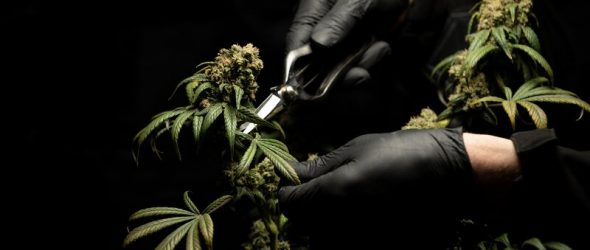Many consumers are snatching up CBD products that may not be all they’re cracked up to be. If it weren’t for cannabidiol, more commonly known as CBD, the marijuana industry would be on the streets begging for nickels rather than enjoying the fruits of a business sector that are predicted to be worth $22 billion within the next few years.
It seems that America has fully embraced the concept of this non-intoxicating cannabinoid in hopes that it will do everything its proponents say it will, from alleviating pain, anxiety, and perhaps even depression.
But due to the company this marketplace keeps — not to mention its lack of federal oversight — many consumers are snatching up CBD products that may not be all they’re cracked up to be. These are just a few of the most common problems with all that CBD the nation has become so smitten with.
Dosage Is Sometimes Lower Than Advertised
Consumers should be able to trust the labels of the products they use, but when it comes to CBD, that gets harder to do. Since these products are not regulated by the U.S. Food and Drug Administration like other drugs, cannabis companies are responsible for putting their own standards in place.
Admittedly, some do a relatively good job manufacturing high-quality CBD. Still, others have no qualms whatsoever about cutting corners pursuing a stronger bottom line. And the proof is in the products.
In fact, a recent analysis from Mile High Labs in Colorado found that some CBD products being sold across the United States are consumer rip-offs. For example: While the advertised dosage might read 500 milligrams, the actual dose could be closer to 300 milligrams. But then again, the dosage debacle could go in the opposite direction.
Dosage Is Sometimes Higher Than Advertised
The same examination, which was commissioned by CBS News, found that as easy as it is for the consumer to get CBD with a lower than advertised dosage, they could also be buying products that contain more than what the label reads.
In some cases, the lab results found CBD products 10 percent over the advertised dosage. But some took it to the next level. At least one sample was found to have 210 percent more CBD than it was supposed to. Some medical experts say consuming too much CBD could pose some health risks. It could make the user drowsy and even cause nausea, vomiting, and diarrhea, according to one toxicologist.
Some CBD Contains Dangerous Synthetic Marijuana
Consumers new to the CBD scene should know that counterfeit products are a real concern. A recent report from the Associated Press shows that some CBD vapes and edibles are being made with dangerous synthetic marijuana known as K2 or Spice. The AP commissioned laboratory analysis found that 10 of the 30 CBD vapes they examined contained some kind of synthetic additives.
What’s more, some of these products didn’t have any CBD in them at all. Unfortunately, many people have been admitted to the hospital after using these bogus products. How do you keep from becoming a statistic? The best advice for avoiding dangerous synthetic marijuana disguised as CBD is to avoid buying it from truck stops, convenience stores, and smoke shops. The U.S. Hemp Authority has a list of certified CBD producers across the country that adhere to strict standards. Check it out before you buy.
CBD Could Have Enough THC Content To Fail A Drug Test
Laboratory tests have shown that some CBD products contain enough THC, the marijuana component that gets the user high, to cause someone to fail a drug test. There have been several reports over the past year or so of people unexpectedly getting flagged for drug use at work after consuming CBD products. This is a problem that stems from a lack of federal oversight, as well.
It is just another reason to always purchase CBD from a reputable dealer as opposed to a neighborhood convenience store. If you want to use CBD for medicine, then the products should be obtained from companies that have CBD’s therapeutic qualities in mind. Otherwise, it’s just a crapshoot whether the CBD you are using is legit or a ticket to unemployment.


